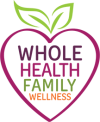
Oh my goodness!!!! It is July in two days! School has come to an end and Abigail and Nolan are heading into Gr 2. I officially have 5 courses left at IHN and will be done in May 2016. Yeah! With all the crazy heat we have been having there have been lots of questions about suntan lotions and creams. I hope this blog will answer a few of your questions.
There is growing awareness of the importance of being smart about sun exposure. The skin is your largest organ and absorbs 60% of what you put on it. Knowing this, we want to be mindful of the products we are putting on our skin… including sunscreen. There are potentially harmful chemicals that are found in many commercial sunscreen formulas.
Organizations like The Environmental Working Group have identified the following common sunscreen ingredients as being potentially harmful to human health:
- Octocrylene
- PABA
- Octyl-methoxycinnamate (OMC)
- Benzophenone-3
- 4-methyl-benzylidene camphor (4-MBC)
- Homosalate
Consumer reports are also saying not to use spray sunscreens: The Food and Drug Administration announced it was investigating the risks including people accidentally breathing in the ingredients. See links below:
http://fox13now.com/2014/07/22/consumer-reports-dont-use-spray-sunscreen-on-children-just-yet/
6 Tips to a Healthy Relationship with the Sun
- Get your D on Spend no more than 5-15 minutes in the sun (with no sunscreen) a few times per week to meet your vitamin D needs. Be aware that getting some sunlight on your skin can be immensely helpful to your health, mainly because UV-B rays in sunlight converts cholesterol found in your skin into vitamin D. Ensuring adequate vitamin D status is essential to experiencing optimal health; every organ system in your body requires an adequate vitamin D level to function properly.
- Buy safer sunscreen Check labels for toxic chemicals and use EWG’s guide to choose the best sunscreen for you. Look for broad spectrum (UVA/UVB) coverage and a SPF of at least 15 and no more than 50.
- Use sunscreen responsibly Apply the recommended amount (usually about 1 shot glass) 30 minutes before sun exposure. Reapply according to the SPF or even more often if you are sweating or swimming.
- Try to limit the amount of time you spend outdoors On extremely hot days and when the sun feels hottest – usually between 11 am and 2 to 3 pm.
- Cover up! We can’t emphasise this enough. The best protection from the sun is complete protection. Hats, clothing (long sleeve shirt and light pants), a shady tree or an umbrella are some of the easiest ways to help prevent sun damage.
- Always be prepared Carry sun protection and sunscreen with you at all times. You never know when you or your children will need it.
And here are some of EWG’s top-rated sun care products in the beach and sport sunscreens category, for adults and kids:
- Green Screen D Organic Sunscreen, Original, SPF 35
- Kiss My Face Natural Mineral Sunscreen with Hydresia, SPF 40
- Aubrey Organics Natural Sun Sunscreen, Green Tea, SPF 30+
- Aubrey Organics Natural Sun Sport Stick Sunscreen, SPF 30+
- Releve’ Organic Skincare by Emerald Essentials Sun-Lite Sunscreen, SPF 20
- Badger Baby Sunscreen Cream, SPF 30
- Seventh Generation Wee Generation Baby Sunscreen, SPF 30
- Goddess Garden Natural Sunscreen
The Bottom Line
So long as you don’t get burned, it’s good for you to get some sunlight exposure on your skin. When circumstances require that you stay outdoors for an extended period of time, your best first line of defense against sun-related skin damage is a hat with a wide brim, appropriate clothing, and shade if available. Whenever you need extra protection against potentially damaging UV-A and UV-B rays, use a sunscreen lotion that relies on physical rather than chemical blockers, and that is free of harsh chemicals that may do more harm than good to your skin and overall health.
The EWG Guide to Sunscreens 2015 is chock full of research and product information. Check it out to get the scoop on more than 1,800 products including sunscreens, lip balms with SPF, moisturizers and makeup.
EWG GUIDE: http://www.ewg.org/2015sunscreen/
What if you do get a sunburn?
Nature’s Aid is an amazing product. I use it for EVERYTHING from sunburn, bug bites, rashes, cuts, scrapes, etc. It is made up of aloe vera, tea tree, witch hazel, vitamin e and rosemary. You can get it at any local health store.
Some good resources below:
http://wholefoodmatters.net/blog/2010/06/safe-summer-sunscreen/

